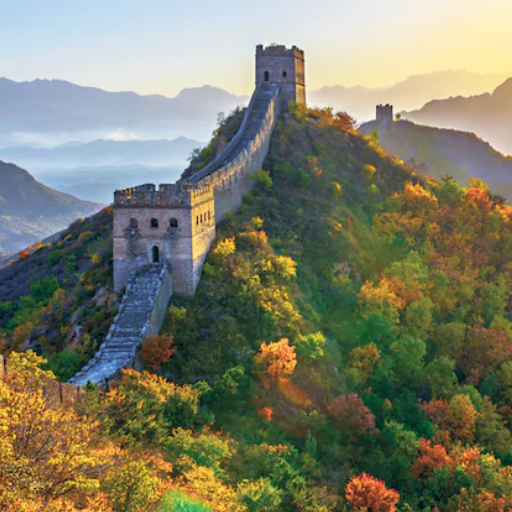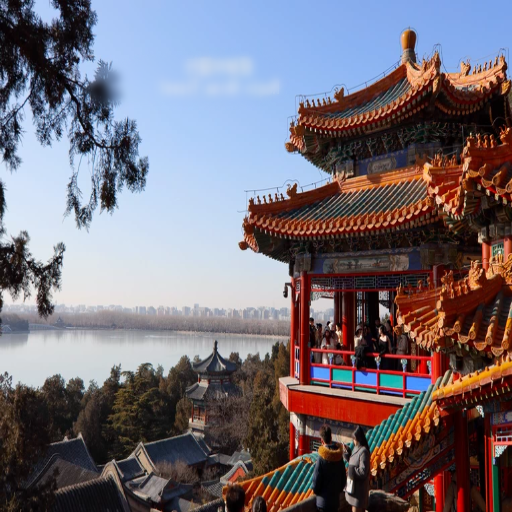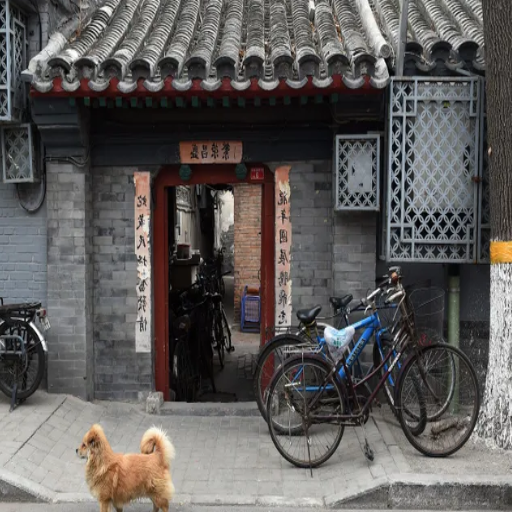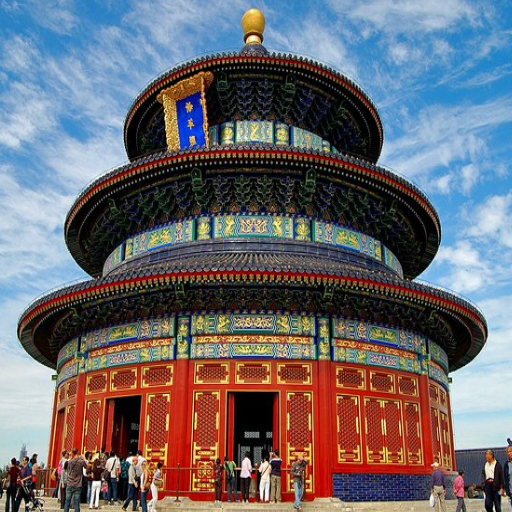Modern technology blends seamlessly with ancient tradition to give rise to the capital of China, Beijing. Not only is the city remarkably innovative in nature, but it has been home to several iconic landmarks and cultural treasures that have captivated tourists worldwide for over a thousand years. From ancient temples and majestic imperial palaces to dynamic urban centers and modern architecture, the city is a blend of contemporary and ancient civilizations. This article serves as a guide for the most important tourist attractions in Beijing, simply put the places you need to visit in 2025. The city is brimming with astonishing wonders and ensures each unearths a unique experience.
What Are the Iconic Beijing Landmarks?

Exploring The Forbidden City
Situated in the middle of Beijing is the Forbidden City, one of the wonders of China and a UNESCO World Heritage Site. Covering over 180 acres, this vast complex was the imperial palace for twenty-four emperors during the Ming and Qing dynasties from the time it was completed in 1412 until 1912. With substantial red walls and a large moat, the Forbidden City was utterly off-limits to the public at one point, representing the most critical level of imperial power. Today, the city remains an architectural wonder and a site of immense cultural heritage, receiving millions of tourists annually.
Built using strict traditional Chinese techniques, over 8,700 rooms and 980 buildings exist in the Forbidden City. Each structure has unique carvings, from glazed yellow roof tiles that exemplify imperial power and dignity to intricately designed dragon motifs. The palace complex was constructed strictly following feng shui and other Traditional Chinese methodologies to emphasize the Imperial dynasty’s ceremonial and political significance. Some of the must-see areas are The Imperial Garden, built for the emperor and his family, and The Hall of Supreme Harmony, the largest wooden hall in the entire complex.
Visitors should spend enough time appreciating the details and history of the Forbidden City. During peak seasons, palace tickets must be reserved in advance, and total admissions are capped to protect the site’s integrity. An audio or guided imperial tour is equally suggested as it evokes a deeper understanding of the details of life as an emperor. Regardless, the Forbidden City is a must-see in Beijing, with its stunning, breathtaking architecture and remarkable cultural legacy.
Learning about the Temple of Heaven
The Temple of Heaven is an exquisite Chinese design piece with significant historical meaning. This large complex, built in the early 15th century, lies in the southern parts of Beijing and served as a sacred site for emperors under the rule of the Yongle Emperor in the Ming Dynasty to pray for bountiful harvests and graciously honor the gods. The structure of the complex uses traditional Chinese cosmology because it represents the merger of heaven and earth. The circular buildings depict heaven, while Earth is represented by the square bases, showcasing the universe’s balance.
Among the most phenomenal constructions in the Temple of Heaven is the Hall of Prayer for Good Harvests. This remarkable Chinese structure illustrates ancient China’s craftsmanship and engineering feat. The Hall’s circular dome, with its triple tiers and wooden erects, showcases the artistry of a long-lost time. Without aids of nails, the erects gifted the building a polish. In total, there are 28 wooden pillars, each serving a role in supporting the structure: The four seasons, 12 months, and the 12 traditional Chinese hours in a day. Along with the Echo Wall and Circular Mound Altar, the Hall of Echo boasts astounding measures for sound amplification and reflecting symbols associated with imperial rituals.
The Temple Of Heaven’s intricate structures are encircled by peaceful parklands, which provide a quiet escape from the city. Early mornings are the most busy, with locals exercising through tai chi, dancing, and other traditional forms of exercise. These activities infuse cultural beauty into your trip. The Temple of Heaven is known as a UNESCO World Heritage site, further enhancing its stunning value. To fully capture the beauty and significance of this site, several hours will need to be dedicated to it. Tickets are required to enter the site, and guided tours or audio guides are highly recommended to appreciate the rich history and symbolism of the Temple of Heaven.
Strolling Around Tiananmen Square
Tiananmen Square, situated in the center of Beijing, is one of the biggest public squares in the world and a hallmark of China’s contemporary history. The square, which encompasses about 109 acres (440,000 square meters), is home to other essential features such as the Great Hall of the People, the National Museum of China, and the Monument to the People’s Heroes, which are its borders.
Visitors frequently ask questions about the Square’s logistics and its history and culture:
Historical Significance: The Square has been the location of numerous historic events, such as the May Fourth Movement in 1919 and the founding ceremony of the People’s Republic of China in 1949. It continues to be a powerful symbol of national pride and resilience.
Best Time to Visit: Early mornings or late afternoons are suitable for avoiding crowds and taking amazing pictures in better lighting conditions.
Access and Entry: The square is open to the public, but visitors must possess some form of ID and will go through security checks. Some other important places in the vicinity require entry fees or tickets.
Visitors can appreciate Tiananmen Square’s monumental importance with some foresight and an understanding of its cultural richness.
Why Visit the Great Wall of China?

Best Sections to Visit: Badaling and Mutianyu
Badaling and Mutianyu are two of the best-known and most scenic portions of the Great Wall of China, and both are well worth a visit.
Badaling is the most famous section of The Great Wall and the best location for a first-time visit. The Badaling area can be reached via car, bus, or train from Beijing, making it easy for tourists to travel. It has wide, well-maintained slopes, which accommodate large crowds of visitors, making it family-friendly, even for children and elderly visitors. With an elevation of approximately 1,015 meters, a key feature of this section is cable cars, which offer guests an effortless visit.
Unlike Badaling, Mutianyu is less popular, more rustic, and attracts fewer tourists, making it the preferred spot for those desiring peace and scenery. Surrounded by trees, this wall section is stunning in spring and autumn. This section offers well-constructed paths and a fun toboggan ride on the way down. Starting with an elevation of around 540 meters, the wall of Mutianyu has a cable car for quicker access for visitors. It also contains 22 watchtowers, which is unique and very impressive.
Both locations have modern amenities like bathrooms, food vendors, and shuttle services, making the visit comfortable and complete. By selecting one of these areas according to your expectations regarding ease of access, crowding, and overall beauty, it is guaranteed that you will have an unforgettable visit to the Great Wall.
History and Significance of the Great Wall
The Great Wall is an excellent piece of ancient Chinese architecture built and renovated over hundreds of years starting from the 7th century. The wall was expanded during the Qin, Han, and Ming dynasties and is now approximately 21,196 kilometers long. The wall was once used as a strong protective wall for military purposes; later, it transformed into a fence that regulated the border. Now, it serves as a base for military communication and is decorated with numerous signal beacons.
The construction of the wall includes many different elements, like tamped earth, bricks, and stones, which have been selected from neighboring areas to adapt to the local environment. The Ming dynasty is renowned for building the wall with bricks, which makes the wall sturdier. The wall is, on average, 6 to 7 meters tall and 8 meters thick at the bottom, making it easier for soldiers and horses to walk around.
Not only does the wall serve a military purpose, but it also showcases China’s engineering marvels and its history’s richness, making it culturally significant. The Great Wall remains one of the most fascinating constructs in human history as it represents strength, perseverance, and the philosophy of overcoming the odds.
What Is The Ideal Time For Visiting The Great Wall?
To get the best out of visiting the Great Wall, it is suggested that you visit during spring (April to June) and autumn (September to November). During these seasons, one can experience splendid views due to flowers blooming during spring and trees shedding leaves during autumn. Never visit during summer (July and August) as that is peak tourist season, and the heat is unbearable. If you plan on going in winter (December to February), you will encounter fewer tourists. Still, temperatures tend to drop below freezing, making parts of the wall slippery and icy.
Ideal Temperature Range: 10°C – 24°C (50°F – 75°F) during autumn and spring.
Avoidance of Peak Crowds: Less traffic is experienced on weekdays than on weekends or public holidays.
Comfortable Clothing and Footwear: Sturdy yet lightweight clothes and shoes are important, particularly when tackling steep steps.
What to See at the Summer Palace?

What Are the Highlights of the Summer Palace
Kunming Lake: With its expansive 540 acres, Kunming Lake is the largest artificial lake in the Summer Palace, which was built to replicate the West Lake located in Hangzhou. It offers phenomenal views and opportunities for various activities, including boating.
Longevity Hill: This hill rises some 200 feet above the other hills and provides spectacular views of the palace grounds. It also features a number of pavilions and temples, making the entire area serene.
Seventeen Arch Bridge: This striking bridge, adorned with 544 carved stone lions, connects the main area of the Summer Palace with South Lake Island. The bridge is famous for its unique architectural style, which combines eastern and western designs.
Tower of Buddhist Incense (Fo Xiang Ge): This landmark and traditional Chinese building is located on the top of Longevity Hill. It has become one of the most culturally important structures in the landscape, making it iconic for its views of the surrounding landscape.
Long Corridor (Chang Lang): This almost one-mile covered walkway is an art piece in itself, featuring 14,000 different paintings that are also painstakingly detailed. It serves as more than just a pathway; it is a cultural highlight and treasure.
Suzhou Market Street: Both sides are marked with shops, so visitors can walk alongside a canal and appreciate the architecture of ancient commercial culture. With all these traits, Suzhou Street stands out as a traditional water-town street.
The Summer Palace encapsulates breathtaking nature, magnificent architecture, and cultural biases. Every site within the palace is historical and artistic, which makes it a primary stop for travelers who want to have a sneak peek into ancient China.
The Significance of the Palace in Beijing’s History
Throughout history, the Summer Palace has served as a vital landmark in Beijing’s history, with its political and cultural significance in different dynasties. It was built in 1750 on the orders of the Emperor as an imperial garden and retreat for emperors, showcasing a blend of traditional Chinese landscape architecture with the finest architecture of the time.
The palace has served different purposes in history, from being a governance site in the late Qing period to being a symbol of endurance after being damaged during the Anglo-French invasion in 1860 and restored in the late 19th century. Its painstaking layout featuring Kunming Lake and Longevity Hill displays the advanced engineering skills and host understanding of Feng Shui at the heart of Chinese architecture and culture.
Nowadays, the Summer Palace is a UNESCO World Heritage site because it is still standing and exemplifies incredible history and mastery alongside Beijing’s imperial legacy. Its design contains key parameters that make it historically important, like its massive area of 290 hectares, the unique melding of natural and human-made features, and its preservation as a cultural jewel for centuries.
How to Explore Beijing’s Hutongs?

The Journey of Hutongs
The evolution of Beijing’s Hutongs is linked to the city’s development and cultural heritage. The alleyways originated during the Yuan Dynasty (1271-1368) and were critical to the residential lifestyle, symbolizing a sophisticated city planning system based on social order and stratification. During the Ming (1368-1644) and Qing (1644-1912) Dynasties, Hutongs increased in size considerably and featured complex designs that linked siheyuan (courtyard houses) in grid patterns oriented to feng shui.
These characteristics are an example of efficient urban planning, which incorporates access to light, communal spaces, and the surrounding nature. The adaptation over the centuries signifies sustainable living while conserving these regions is an attempt to protect cultural identity amidst modernization.
Top Hutongs to Visit in Beijing
According to my experiences, the hutongs in Beijing Nanluoguxiang, Wudaoying Hutong, and Shichahai Hutong are some of the most remarkable. I am particularly impressed by Nanluoguxiang, which has a rich history and lively atmosphere, including many traditional courtyard homes and modern shops. Shichahai Hutong has beautiful lakes and ancient buildings, so I think it is very famous and appealing. Furthermore, Wudaoying Hutong puts me under its spell as it has cozy cafes and boutique shops that invite for a stroll and combine quiet charm with vibrant allure.
I believe integrating the most critical parameters for these hutongs is successfully achieved. Take, for example, Nanluoguxiang, where the design enables the optimal flow of light and air into the zone. The courtyards in Wudaoying are also Fengshui compliant, which means they are harmoniously balanced. Moreover, Shichahai has open communal spaces by the lake and enhances the environment, an excellent example of environmentally conscious design. Cultural value, as is the functionality of urban design, is an important issue, which is why these areas should remain preserved.
Experiencing Local Life in Beijing’s Hutongs
Based on my experience, Beijing’s Hutongs neighborhood reveals a different aspect of the city’s information and local life. From Architectural Design, I was impressed with the thoughtful construction of siheyuan courtyards, which capture natural sunlight and enable good airflow into the interiors. This type of construction also includes insulation housing, which guarantees comfort in densely populated urban areas. As a result, peaceful and harmonious vibes are created, which can be felt from the arrangement of doors, walls, open spaces, and the general location of the area, traditional feng shui.
Moreover, the open communal spaces of the Shichahai and the natural lake around it have helped shape my understanding of how nature is incorporated into the design of a city. Following are the particular technical features I noticed which support these functions:
Natural Ventilation and Light—In Siheyuan, spacious courtyards surround the buildings on four sides. This arrangement dramatically enhances ventilation and light throughout the day.
Environmental Protection – Using grey bricks sourced locally ensures that construction is eco-friendly.
Sustainable Development—Conserving water resources like Shichahai’s lake serves the community by beautifying and cooling the area, and it is also a natural resource.
These factors reflect that Hutongs maintain their cultural heritage while being functional in modern ecological design and planning.
What Are the Religious and Cultural Attractions in Beijing?

Visiting the Lama Temple
At the Lama Temple, I was astonished by its strange history and calm ambiance. Known officially as Yonghe Temple, it is one of the most significant Tibetan Buddhist temples outside Tibet. Walking through the Tibetan halls, I marveled at how the different cultures blended in the architecture. The massive 26-meter statue of Maitreya Buddha is something I will never forget. The craftsmanship and spiritual value of the statue, made with a single block of white sandalwood, are incredible.
From an engineering standpoint, the Lama Temple is meticulously thought out. Unlike Western architecture, the traditional Chinese geomantic principles are fully functional and spiritually productive. It is also more visually appealing and stable because of the symmetrical design and the longevity of sandalwood tor tile as the material. It is bound to preserve its heritage and serve as a wonderous example of sustainable religious architecture.
Visiting Buddhist Temples in Beijing
The Lama and other Buddhist temples in Beijing are on par with the best in the world structurally and construction-wise. These temples stand out to me because of the geometrical techniques used in their construction. These techniques go beyond belief and play a vital role in ensuring the buildings have balance and are structurally sound. An example of this principle is how the symmetrical design improves load-bearing distribution and the structure’s durability. In addition, the materials used, such as sandalwood and tiled roofs, authentically preserve the culture while resisting natural decay.
The design and position of these temples have a practical meaning and seek to aid meditation and worship. In addition, any ‘design’ consideration influences key elements such as space organization, daylighting, and sound. An example of this is how the proposed design is bound to facilitate natural lighting and cooling alongside an atmosphere conducive to tranquility. The blend of these spiritual and scientific aspects is one of the main reasons these temples capture the interest of not only devotees but historians and architects alike.
Using local and sustainable materials reduces the environmental impact of these structures, making them more eco-friendly than other sustainable options. For instance, sandalwood provides a sturdy framework while creating a tranquil environment. Additionally, the tiled roofing demonstrates climate-responsive design due to its ability to withstand the changing weather in Beijing. The combination of these choices reflects the gluedge’s commitment to fostering the natural world and enables the temples to be both timeless and functional.
Why the Hall of Prayer for Good Harvests is Significant
The Hall of Prayer for Good Harvests is significant for me because, in ancient times, it was a connection to heaven and God when people were seeking blessings for an abundant harvest. Its circular shape on three levels of marble terraces portrays heaven and earth in harmony. These choices affect its parameters concerning stability, acoustics, and air movement. For example:
Wood used: The structure’s frame is made of wood – more specifically, Chinese cypress, which guarantees strength and durability, making it fitting for such an essential spiritual structure.
Design of the structure: The circular shape of the hall is capable of withstanding environmental stresses evenly and containing structural integrity.
Acoustics: The symmetry of the windows and walls enhances the room’s acoustical properties, which is important during ceremonies with sound and prayers.
Adaptation to Climate: The roof is tiled to allow rainwater runoff and protect the interior from the harsh conditions that Beijing can present.
Every parameter mentioned serves practical as well as symbolic purposes, strengthening the hall’s function and its link with nature, spirituality, and intervention.
Frequently Asked Questions (FAQs)
Q: Which sites should be prioritized while traveling to Beijing?
A: If you travel to China’s capital, Beijing, you should check out the Forbidden City, Temple of Heaven Park, and the Summer Palace. These are some hints of ancient China and its unique history. Make sure to walk through the hutongs for an experience of traditional Chinese life, which is quite different from the modern city surrounding it.
Q: What is the best way to get a feel of the hutongs in Beijing?
A: To get the most out of the hutongs, try a guided walking tour or a rickshaw ride. These tours include visits to typical courtyard homes and insight into the life of typical Beijingers. The hutongs of Beijing will give you a very different view of the city, almost as if you’re in a time machine.
Q: Is there a theme park you would suggest in Beijing?
A: I recommend going to Universal Studios Beijing. It is an exciting theme park that offers various attractions and entertainment for every age. The park takes parental guiding cartoon characters and movies from kids’ favorites, making them live, an ideal recipe for a day filled with fun and excitement.
Q: What is the historical importance of the Temple of Heaven Park?
A: It is a magnificent construction of architecture and landscape design. The Temple of Heaven Park is where Ming and Qing emperors conducted annual ceremonies to pray for a good harvest. It exudes ancient Chinese appreciation for the harmonious belief of heaven and earth.
Q: Where can I get authentic souvenirs from Beijing?
A: For absolute mementos of your trip, visit Qianmen Street and purchase these items at some of Beijing’s oldest shops. You can buy traditional Chinese crafts, antiques, and snacks or visit Wangfujing Street, which is always crowded but also sells many souvenir items.
Q: How can I add the Great Wall to my itinerary for Beijing?
A: The Great Wall is one of the many prominent landmarks in China. If you’d like to visit a less populated section of the wall, visit the Simatai portion to the north of Beijing. It has stunning views and allows for quiet reflection away from crowds.
Q: Are there any good art galleries in Beijing?
A: The answer is yes. There is the 798 Art District, one of Beijing’s most energetic art districts. It has many galleries and exhibits of modern Chinese and international artists. It also has cafes and shops, which are ideal for spending an afternoon. Art lovers must visit this area.
Q: Why is the Central Axis critical in Beijing?
A: It is historic because it contains essential cultural and historical assets in the city, such as the Forbidden City, Jingshan Park, and Temple of Heaven, among others, composing the crucial landmarks in the city. This is a central part of the city and the mark of Beijing’s culture. The centerline of Beijing is the ancient urban area of the city; the central axis is such.
Q: Are there other well-known parks near Beijing suitable for recreational purposes?
A: It is one of the most famous parks in the Beijing area. This garden is regarded as one of China’s oldest and best-preserved imperial gardens. In addition to walking through the beautiful gardens, visitors can also go sailing on the lake or see some of the park’s landmarks, such as the white dagoba.
Q: What role does Mao play in Beijing’s history?
A: Mao Zedong has been an influential figure throughout China’s history, including Beijing. In 1949, he announced the establishment of the People’s Republic of China from Tiananmen Square. The city boasts many statues and memorials that prove his legacy and the impacts of his rule over China.